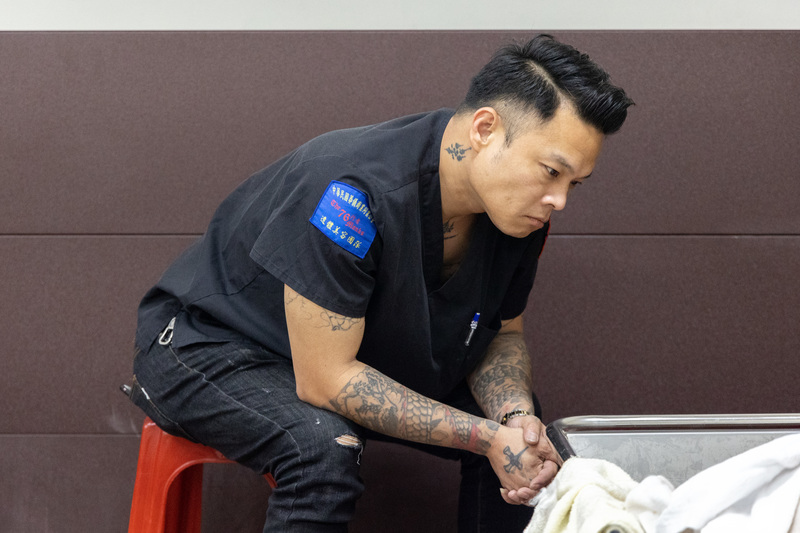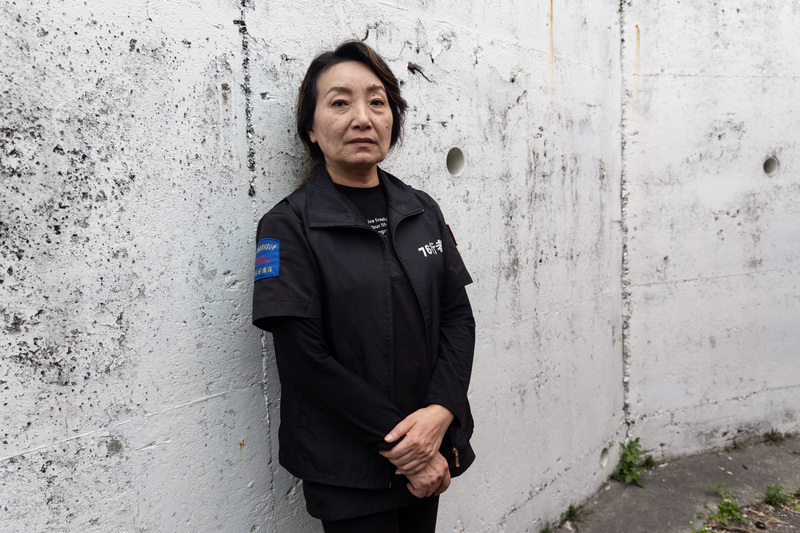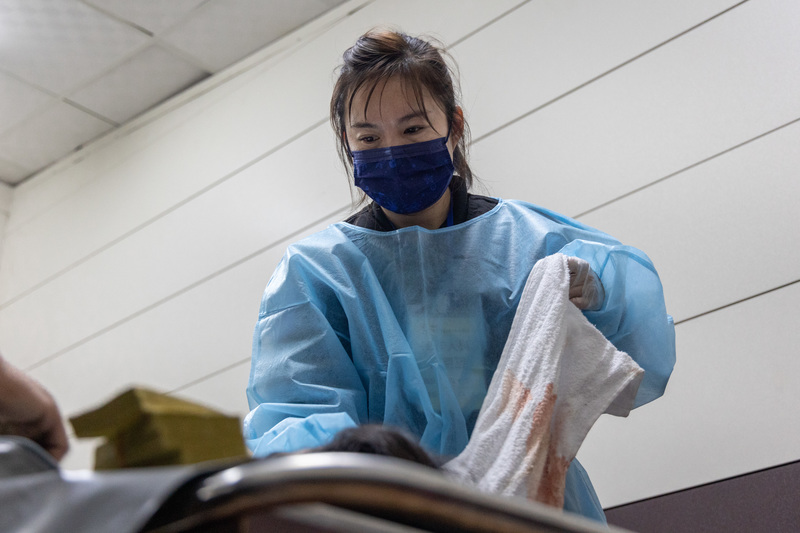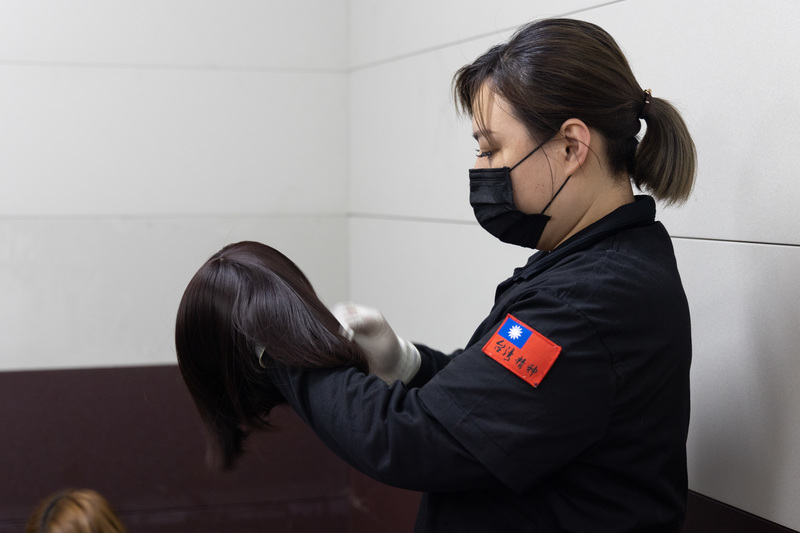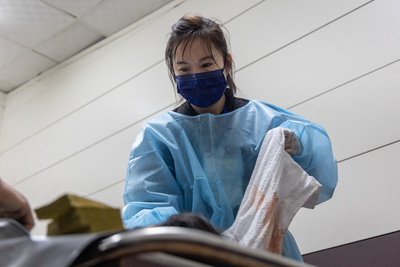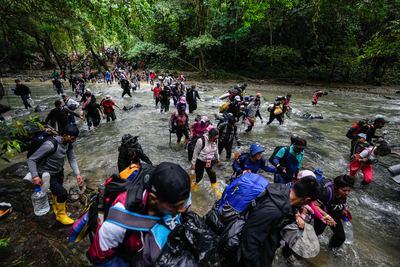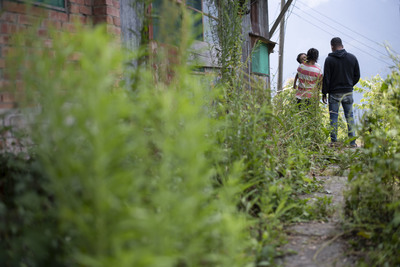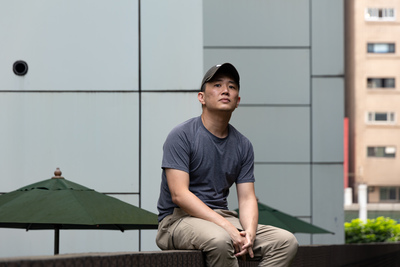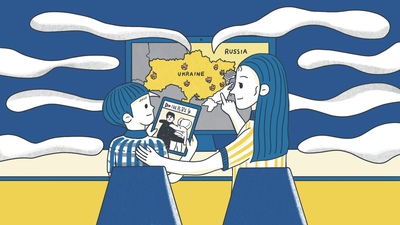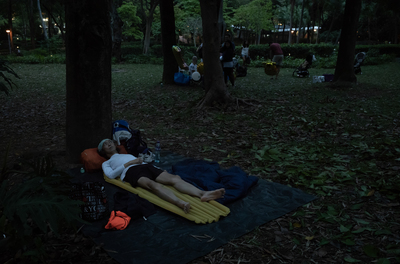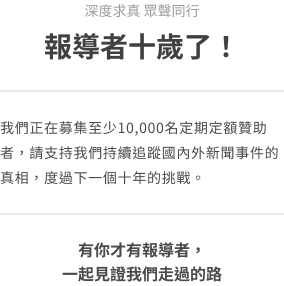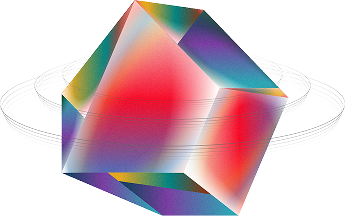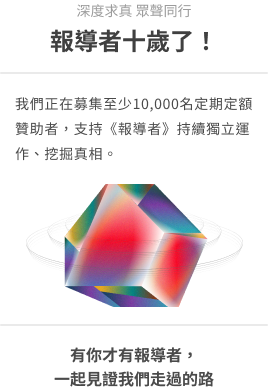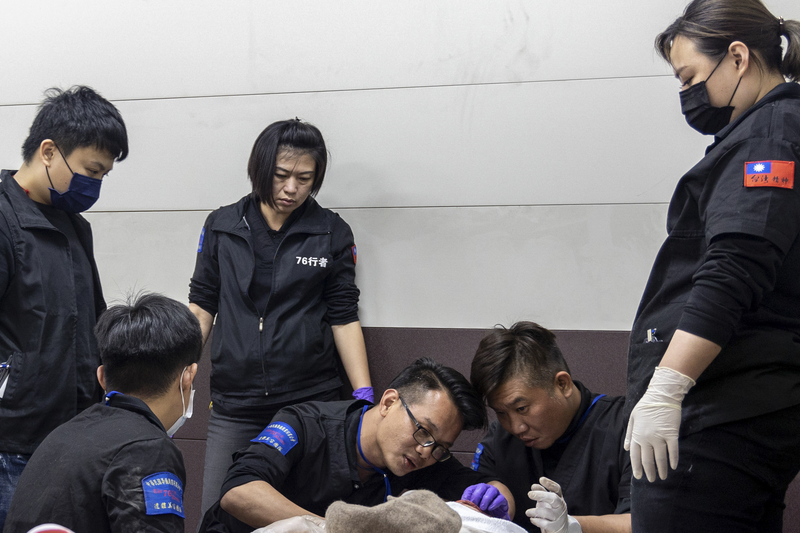
On April 2, 2021, a Taroko express train operated by the Taiwan Railways Administration (TRA) derailed at the Qingshui Tunnel in Hualien, resulting in 49 casualties. Due to the collision severity, most of the victims’ bodies were severely disfigured. A group of volunteer mortuary cosmetologists from the 76 Monks – a non-profit organization which has assisted with many large-scale disasters – were immediately dispatched to assist in the reconstruction of the corpses with the intent of protecting the dignity of those who perished. The Reporter visited the restoration site of the Hualien City Funeral Home over several days and learned that the cosmetologists are willing to overcome all difficulties and come to serve from all over Taiwan. How did cosmetologists from the 76 Monks go about fixing the wounds of the deceased and heal the grief of the living with their bare hands?
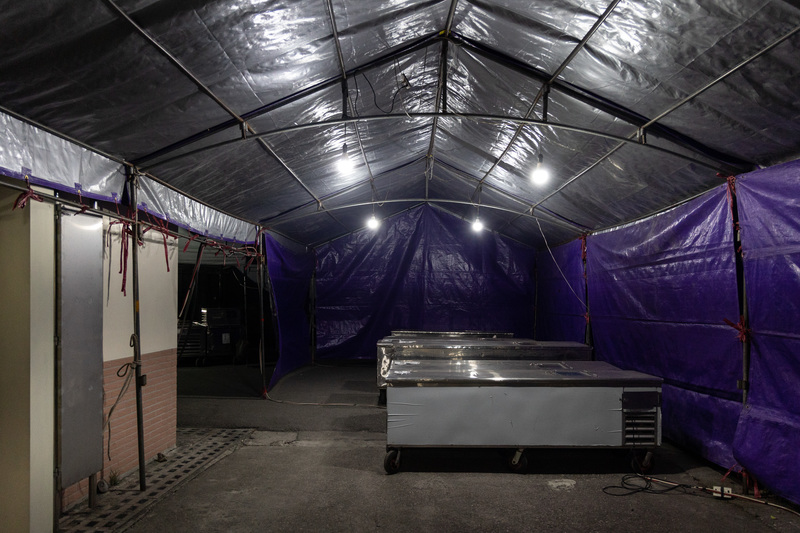
In the middle of the night at the Hualien City Funeral Home, the furthest corners of the corridor were still lit. Due to the derailment accident of Taroko express, the casketing room, the morgue, and the defrosting room had been converted into spaces within which to reconstruct the victims’ remains. When there were lights, there were people; there were more than a dozen mortuary cosmetologists from the 76 Monks team (76行者遺體美容修復團隊) who had stayed behind and were busily working away.
The organization first came together following the Penghu air crash and the Kaohsiung gas explosions. In commemoration of the combined total number of victims from the two incidents, 76 became the name of the team. Afterwards, from the 2016 Tainan earthquake, the 2018 Hualien earthquake, to the derailment of the Puyuma express in 2018, their presence could always be found at the scene. Their participation helped them gain experiences handling numerous large-scale disasters.
At 5 o’clock in the afternoon on the day of the accident, the first group from the 76 Monks moved in. In the days following the accident, they only returned to the hotel for a short time, spending less than four hours to wash up and rest before going back to work. The communal hall of the funeral home became their temporary break room, with materials needed to restore the body piled around them. The table top was cluttered with so many items that it became difficult to clear out even a tiny space. A cosmetologist, who was so tired his eyes were already closing, came here to nap for a while.
The accident caught them off guard. The team surrounded the base with red plastic stools, then placed a tray on top to turn it into a makeshift workbench. The woman lying on the cold platform, wearing a long beige woolen coat and dusty rose-colored dress, was just dressed by the cosmetologist with the clothes her family brought; clean and serene, looking as if she had never been to the horrific accident site. However, the decapitated body made it difficult to deny the cruel and weighty facts of the accident.
It was these undeniable facts that broke the heart of many family members of the deceased, making them unable to turn their gaze at the bodies.
The most difficult scenario is when the prosecutor asked the family to identify their loved one’s body. Chen Hsiu-chiang (陳修將), the chairperson of the 76 Monks, explained: “It was usually in its worst condition when the body was first uncovered. Sometimes there was still sand and gravel on the body. When the examination was carried out – perhaps the body had been tidied up a bit – things would be a little better, but it’s also like a second blow.” To avoid causing pain again, “we don’t let them see it again before we carry out our work, because every time they witness it, it breaks their heart,” Chen said. Nearly every group of family members couldn’t handle the sight and fainted.
These dilapidated bodies made it hard to imagine that they were once perfectly intact. This is not only true for complete strangers, but even more so for loved ones—the meaning of “being human” is challenged by their drastically altered appearance.
Wang Wei-chun (王薇君), a spokesperson for the 76 Monks known as “Auntie”, had stood by many family members going through difficult times. After this accident, some people were angry and upset at first because they couldn’t find their loved ones, and the DNA comparisons were delayed. Until the body was uncovered from the scene, they had no choice but to accept it. She said that the family members would usually say that “they think” the dilapidated bodies belong to their loved ones. Subconsciously, they refused to admit it, hoping that it was not the case.” Not fully admitting it, in fact, is to hold back that bit of anguish for the dead.
It’s not only the family members who couldn’t withstand the pain—the cosmetologist also had their moments when facing the bodies.
As the chairperson, 41-year-old Chen Hsiu-chiang is also an experienced mortuary cosmetologist. The rest of the team call him “teacher”, and many of the members are students of his own. Despite his wealth of experience, he choked when facing the missing parts of the body of a little girl. “I got about halfway through but couldn’t finish the work,” Chen said. He has a daughter of the same age, but the complexity of emotions was not triggered by the scene in front of him, but resulted from years of training that allowed him to imagine the process of death in concrete details. “A series of images emerge, like you are writing a novel, from a first-person perspective. You have to put yourself in the character and experience the entire process. This can help us understand the deceased and the family members.” It’s just too painful to comprehend. “This happens especially when it comes to a child – as soon as the scene comes up, you start to cry. You just can’t accept it.”
Cosmetologist Peng Hsiao-chi (彭筱琪), who has been serving since the establishment of the team, also remembers the little girl. “I was a bit put off, but I still made myself do it for her. You can see that her body is no longer intact.” Nonetheless, being a cosmetologist comes with its duties. Responsibilities have to overcome mental hurdles. “As primary consideration, my hope is that when her family members come to see her, I can reach at least 90% of their expectations. If you are able to provide comfort to the family members, they might not need to go through shocking waves of emotions,” said Peng. That is her job. It’s also the aim of all the members of the 76 Monks.
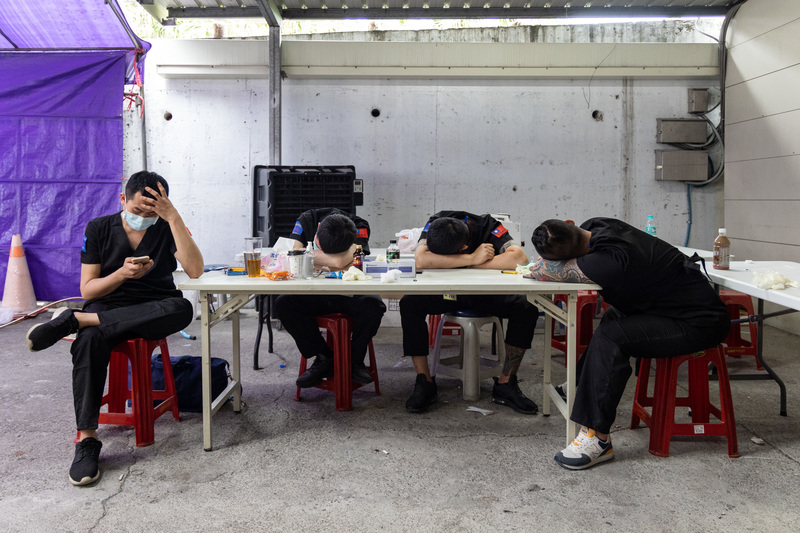
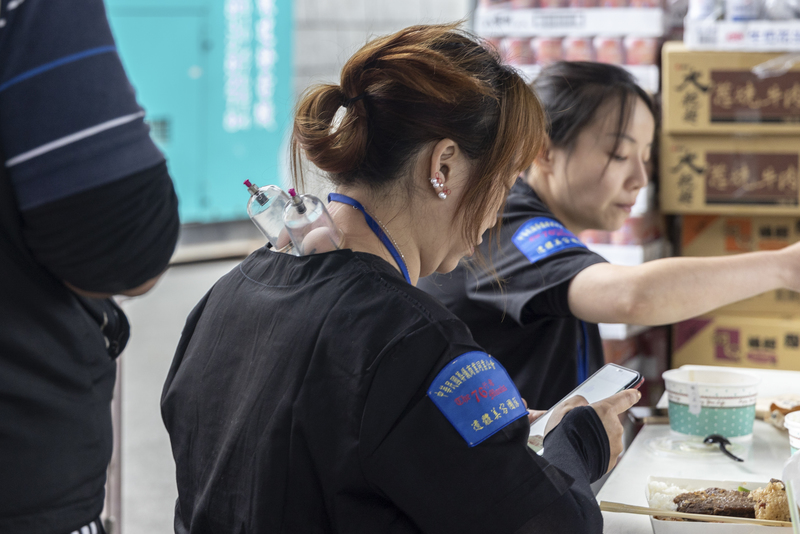
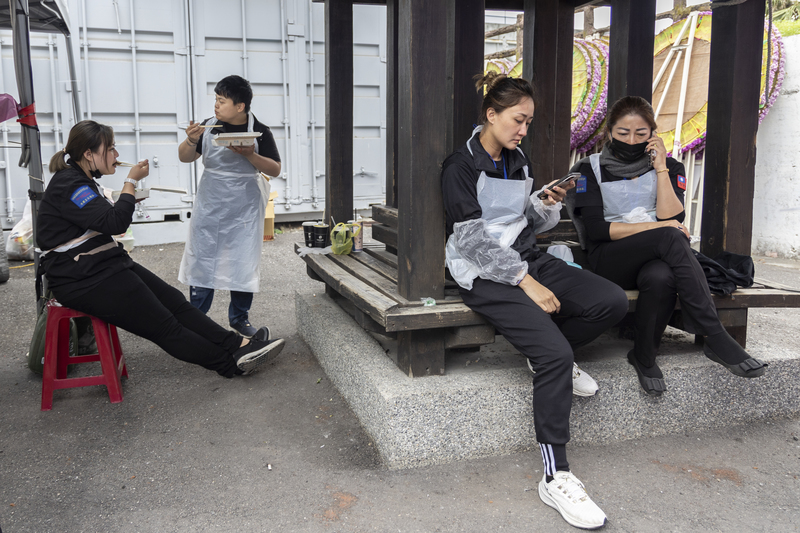
Upon receiving the news, the advance force of the 76 Monks rushed from all over Taiwan, mobilizing 58 staff in the first echelon. Chen Hsiu-chiang explained that there are different teams of cosmetologists in response to different levels of damage to the remains. The 76 Monks mimics the injury grading system in the emergency room of the hospital, grouping the remains into different tiers - and the condition of the remains in public security accidents or major traffic accidents is often the most serious. A body requires 6 to 8 cosmetologists to work together, and it may require 20 to 30 hours of effort to complete.
In this incident, Chen Hsiu-chiang estimated that 120 people were being mobilized, and it would take at least one week to repair all the remains.
Rehabilitation of the remains includes several processes: washing, stitching, reconstruction, and finally makeup. “When doing this, the bones and flesh tissues must be positioned and sutured first, and if there are other defects, the prosthesis will be made at the end,” Chen Hsiu-chiang said. The Taroko train cars were derailed by impact and were crushed after entering the tunnel. The damage situation is thus more difficult to handle. But the team has a lot of previous experience. There is no technical problem, yet the hardest part is still emotional adjustment.
Sun Hsiao-i (孫曉易), who is called “Big Sis” by many of her fellow cosmetologists, joined the team when it was originally founded; seeing the appearance of her brother when he passed away gave her the determination to learn how to restore the dead’s remains, and now her daughter is also engaged in service. When it was first founded in 2014, the 76 Monks had only 27 members, now it has grown to 300 people. Two-thirds of the members are in the funeral and interment industry, and the rest are from the police and medical-related jobs. Since most have jobs, they don’t see each other often. Sun said, “We all know each other from disasters, so we don’t want to run into each other. It’s never a good thing to be reunited.” Hearing the bad news, everyone pushed aside paid work offers and volunteered their services for free.
“No one want to see so many people die in one scene. We just try to repair the bodies as soon as possible, so that their family can take them back,” Peng Hsiao-chi added. It is not that the cosmetologists do not want to sleep, but with the process of repairing the body, every minute and second is crucial. The longer the body is there, the stronger the smell will grow, and the effects of the makeup applied to the remains will be reduced, so that the body will look considerably different than what the family expects.
To complete the task in a race against time, cosmetologists will manage their moods and encourage each other at work. When there is uncertainty about how to proceed, “everyone just looks at each other and determines who is going to do what, or stops to discuss before continuing. After reaching a consensus, the work is carried out much faster.” Sun Hsiao-i explained.
However, there are still limits with regards to the restoration of the remains. Chen Hsiu-chiang explained to the victims’ family in advance and begged them to consider that the appearance of their loved ones won’t be restored completely. This is to avoid unrealistic expectations. “The victim’s family hope that [the deceased] will look exactly the same as when he was alive and chatting over there. But even if the body were completely unharmed, the difference between life and death is huge. Just the lack of blood and the expression on the face is a big difference.”
While they used their hands to repair the tangible wounds of the deceased, the invisible wounds of the people being left behind need more time to heal.
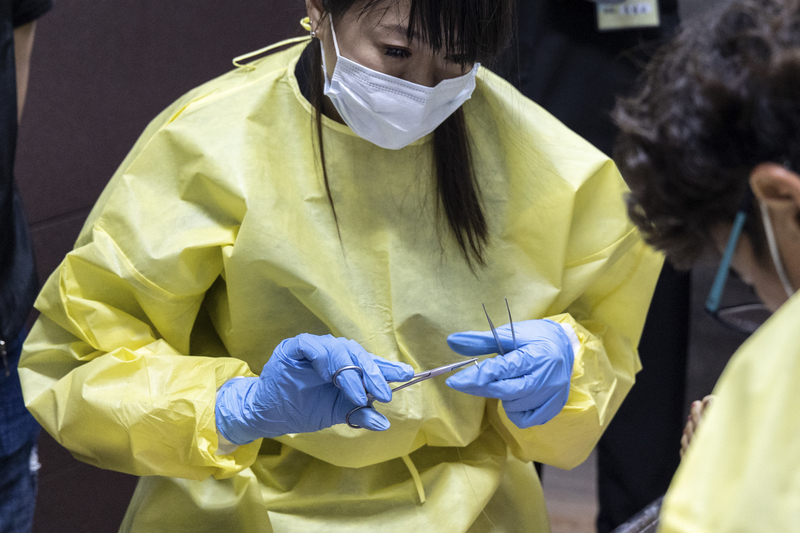
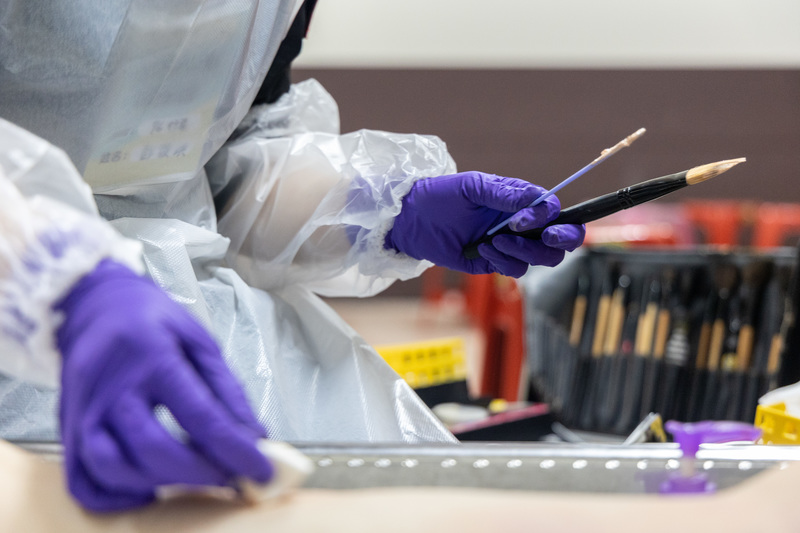
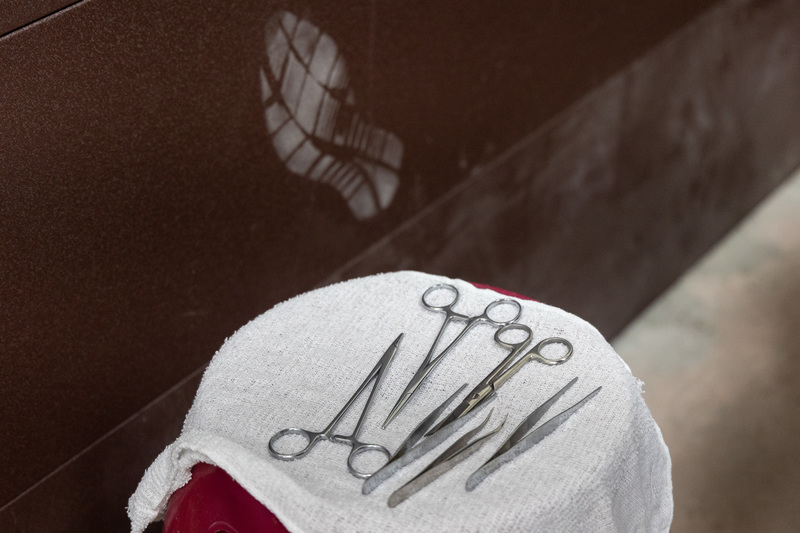
When the 6-year-old little girl surnamed Yang was sent to the funeral home, there were sutures which resembled several knots on her face. Those were sewed by the doctor in a rush. Yang’s mother fetched her father, who was also injured in the accident, and pushed him over in a wheelchair. The mother asked the team worriedly, “Is there a way to make her look beautiful?” Chen Hsiu-chiang promised her that there will be no visible stitches after the repair is over. The work was completed, and indeed the promise was fulfilled, but the girl’s parents still couldn’t help crying.
Chen Hsiu-chiang believes that tears will be the starting point for healing. He often encourages victims’ family members not to suppress their feelings, and tells them that they must vent their emotions appropriately. “I said ‘You must take care of yourself. It’s okay to cry, we are here with you.’” This will change her perspective, and she will feel as though you are standing by her.
The unwillingness to let go of their daughter caused the Yangs to come back several times. The mother initially planned to put a toy in the mourning hall, and asked about it because she was afraid of losing it or having it being cleaned up. After some thoughts, Chen Hsiu-chiang suggested that she could put her daughter’s fluffy doll directly in the freezer. The mother asked the team to put it on her behalf. “I told her that she can bring it to her daughter herself and talk to her, saying that you brought her favorite doll for her, and to hold onto it and take it with her.” Chen accompanied her to see her daughter and the other left gratified. She said that her little daughter would be very happy.
Chen told us that a parent will always remember the appearance of a child when it was born, and the sudden visit of death will leave scars that are indelible. Therefore, how to work through the loss is particularly important. “You can treat them like they are alive in the final moments. Treating them the way you used to can offer solace and redemption in itself.” The re-enlivened memories and connected emotions can be rehashed at any time. “This is what will allow this person’s spirit to live on. Our deepest motivation is to accomplish this.”
The knot of stitches on the little girl’s face was removed by the cosmetologist , and in a final act, the knot in the parents’ hearts were also given the possibility of slowly loosening.
28-year-old Chen Yu-an (陳俞安) encountered the Puyuma express train accident right after she joined the team. Experiencing two train accidents, she is very much familiar with the unpredictability of fate. She said that what she can do is try her best to repair and relieve the pain of those who remain. Working mainly as a nurse in the hospice ward, Chen also helped the patients’ family members deal with their loss. However, unlike in the hospital, there was no time to prepare for the death in accidents. “They can only deal with their emotions in the moment. I hope at the very least I can hold their hand so they can say a proper farewell. It has a physical form - it’s not enough to just talk to a photograph.”
Although not yet ready to work alone, Chen works hard to follow every instruction in an attempt to lessen the feeling of regret associated with death. “If the body has maintained its shape and is wearing familiar clothes, it will feel like it is your relative.” You can only recuperate if you are able to thoroughly vent. “It may take a very long time to recover, but that probability becomes much higher.”
The cosmetologists of the 76 Monks are therefore willing to stay here and open the first door of a long journey.
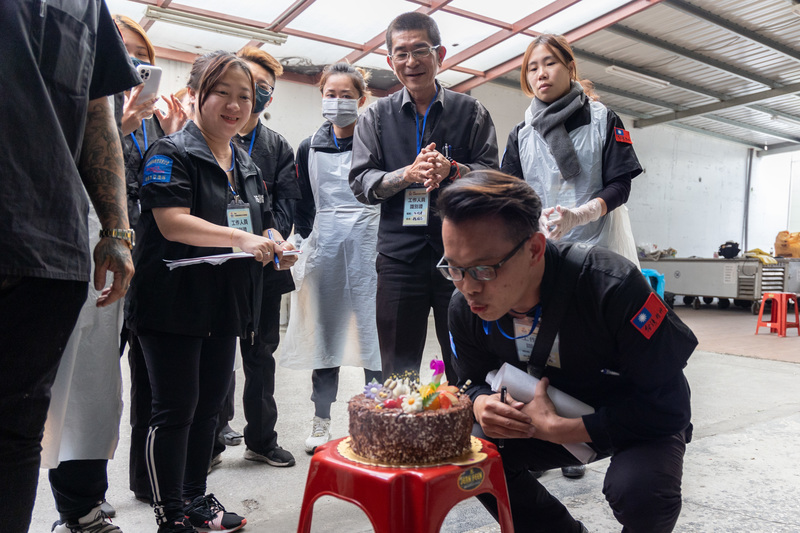
April 5 was originally the last day of the Tomb Sweeping holiday, but it was already the fourth day when the 76 Monks was busy working. Cosmetologist Chiu Bo-sen (邱柏森) did not expect to actually spend his birthday there. The other members prepared a cake for him. Although the scene looked a bit off, Chiu made a wish in front of the candles: “I hope everyone will successfully complete this mission.” To maintain the solemn mood, everyone replaced the singing with applause, and returned to their respective posts after a simple blessing to continue their work.
Perhaps it was a miracle, or the will of this group found a way. Within one hour of making the wish, the body that was being reconstructed throughout the entire night before recovered her own face. Waiting in suspense, her features emerged. Several cosmetologists ran through the corridor and confirmed, then immediately notified the forensic doctor and the prosecutor to come to verify, and it was confirmed it was the appearance of the female victim. Sun Hsiao-i, who hadn’t slept for 50 hours, couldn't help but shed tears of excitement beside the body, and the other cosmetologists were also left speechless for a moment.
This is the only resolve that exists in regret, and it is also the tiniest and and most precious of hopes in despair that acts like a shot in the arm for the staff on site. The next set of bodily remains that needed to be reconstructed would present an even bigger challenge, but the 76 Monks had not and would not give up. This is because the people who gathered there understood that after a long night there is dawn—just like the journeys of reconstruction and healing.
Outside the work area, Wang Wei-chun and Chen Hsiu-chiang were breaking the news to the little girl’s mother.
“She is beautiful, she is back.” At that moment, Wang and the victim’s family members hugged each other deeply, suddenly silent, but extremely firm—just like she had done countless times in the past.
(To read Chinese version of this article, please click: 有形的縫補、無形的救贖──專訪遺體修復師76行者團隊)
深度求真 眾聲同行
獨立的精神,是自由思想的條件。獨立的媒體,才能守護公共領域,讓自由的討論和真相浮現。
在艱困的媒體環境,《報導者》堅持以非營利組織的模式投入公共領域的調查與深度報導。我們透過讀者的贊助支持來營運,不仰賴商業廣告置入,在獨立自主的前提下,穿梭在各項重要公共議題中。
今年是《報導者》成立十週年,請支持我們持續追蹤國內外新聞事件的真相,度過下一個十年的挑戰。

